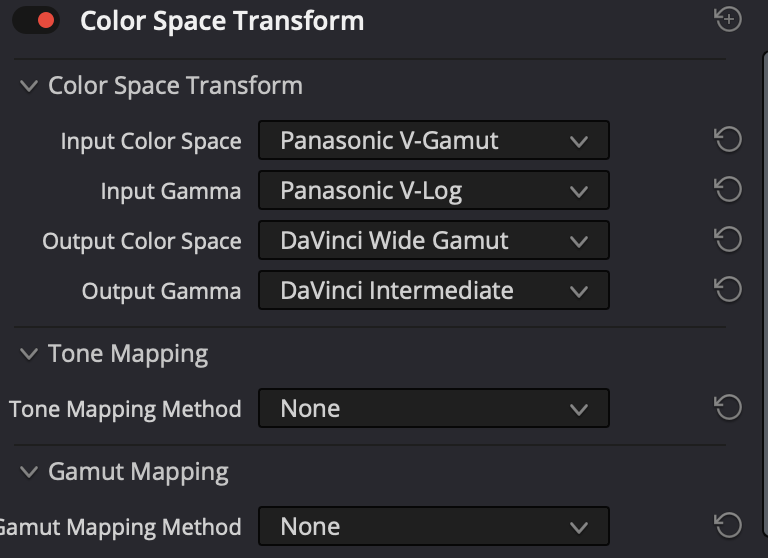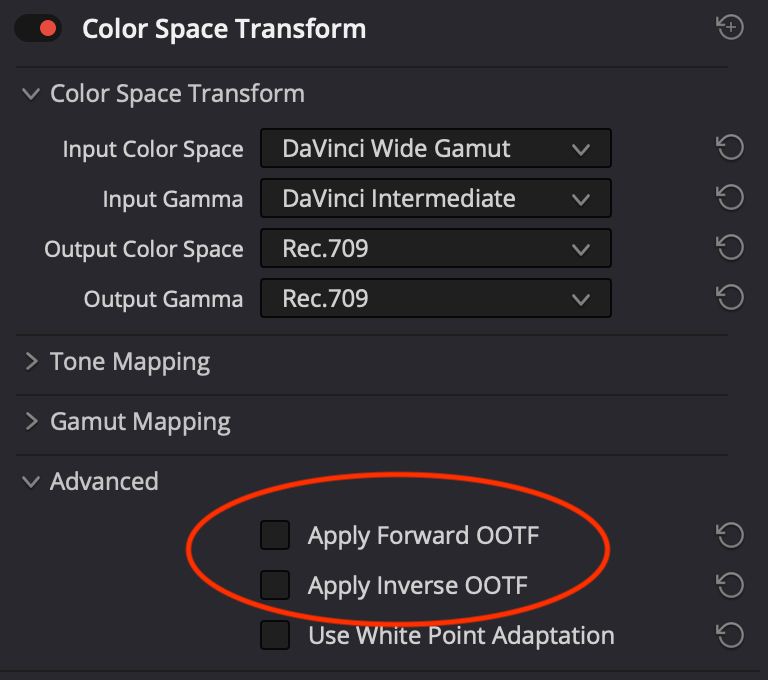-
Posts
12 -
Joined
-
Last visited
Content Type
Profiles
Case studies - Free
Case studies - Premium
Resources
Insider
Courses
Forums
Store
Everything posted by Douglas Dutton
-
Dear Lowepost team, If I'm not mistaking it's been a long while since you managed to do a "behind the grade" article. I don't know about the other readers but I really enjoy those insights and would love to see more. And if possible if ever you were able to do more of them, I would personally love to see more details in them. Although I imagine it also depends on what those fantastic artists are able to share. Many thanks Douglas
-

Davinci Wide Gamut Non Color Managed
Douglas Dutton replied to Douglas Dutton's topic in DaVinci Resolve
Thank you so much for your anwser Marc, I will definitly check it out! Many thanks Douglas -
Hi Marc! Thank you so much for your anwser! Such a pleasure to read you, I saw you rencently in the Learn with Masters Masterclass and really loved your input! Actually having seen the lowepost masterclass on colour management and double checked the resolve manual, the only mention of OOTF that i found is this one. And unfortunatly could'nt find any explanation on what these 2 options do and when they should be used. (Apply forward OOTF / Apply Inverse OOTF in the Color Space Transform OFX). Many thanks for your reply Douglas
-
Hi everyone! I'm wondering if when working in a Non Color Managed Workflow, Davinci Wide Gamut could work as a good substitute for Aces. Let's say I'm working with different cameras like Red, Alexa, Sony, Panasonic, and I apply a CST as an IDT towards Davinci Wide Gamut / Davinci Intermediate. Will the cameras match like they would working in Aces? Supposedly grading within a unified Davinci Wide Gamut could work better for regular grading response for the tools and also as a Gamut compressor. Many thanks Douglas
-
Hi everyone! I noticed those 2 extra options in the Advanced submenu of the Color Space Transform OFX like you can see below: I noticed that when Forward OOTF is ticked, then the footage appears darker than without it being ticked. And when Inverse OOTF is being ticked, then the footage appears lighter than without it being ticked. What are these options for? And when should they be or not ticked? Couldn't find anything about that in the manual. Many thanks! Douglas
-

RCM Workflow - White Balancing in Log space
Douglas Dutton replied to Douglas Dutton's topic in DaVinci Resolve
@Jamie Neale Thank you Jamie! -

RCM Workflow - White Balancing in Log space
Douglas Dutton replied to Douglas Dutton's topic in DaVinci Resolve
@Samuel Holdridge Thank you Sam, that's interesting! @Anton Meleshkevich Hi Anton and thanks for your detailed comment! What you say about YRGB is interesting and if it's the only way to work on the footage in linear fashion then it's a no brainer... I thought that in YRGB changing the timeline color space didn't change anything as when you do, your footage looks the same. Or does it? And basically what I read about it is that if you want to change your export's gamma, you do need to add a CST Timeline node to convert it. Thanks a lot for your input! Douglas -
Hi everyone! I've been experimenting with RCM and Davinci Wide Gamut and really enjoy it so far! However I like to do my White Balance adjustment using printer lights to the log space of the image. When I work with Prores, RCM cannot detect which camera the footage has been shot on, so I can balance the footage in the log space. However when I work from the Raw or the native camera file, Davinci will convert the footage to Rec709 2.4 (set as my output color space). And that seems to be how my footage is inputed in Resolve. In RCM workflow, How do you balance your footage in the log space and not in an already converted space? Many thanks Douglas
-

Hollywood Colorist Walter (CSI) about his color grading process
Douglas Dutton commented on Lowepost's insider article in Courses
Hello Walter and thanks a million for your insights! I'd love to know your approach for using a Film Emulation Lut such as the Kodak 2383 provided in Resolve. Do you use those LUTS at full opacity and do you do a Color Space Transform to Cineon Log for instance in order to match the Gamma the Lut is designed for? Overall how do you work with such LUTS? Many thanks! -

Hollywood Colorist Walter (CSI) about his color grading process
Douglas Dutton commented on Lowepost's course in Finishing & VFX
Hello Walter and thanks a million for your insights! I'd love to know your approach for using a Film Emulation Lut such as the Kodak 2383 provided in Resolve. Do you use those LUTS at full opacity and do you do a Color Space Transform to Cineon Log for instance in order to match the Gamma the Lut is designed for? Overall how do you work with such LUTS? Many thanks! -

Hollywood Colorist Walter (CSI) about his color grading process
Douglas Dutton commented on Lowepost's insider article in Courses
Thanks a lot for answering! You're a legend! -

Hollywood Colorist Walter (CSI) about his color grading process
Douglas Dutton commented on Lowepost's course in Finishing & VFX
Thanks a lot for answering! You're a legend! -

Hollywood Colorist Walter (CSI) about his color grading process
Douglas Dutton commented on Lowepost's insider article in Courses
Thank you so much for your insight Walter! That was very informative!! You said that you never have to key skin if you've done the balance and scene node right. Can you please expand a bit on this? I am learning color grading and I thought when pushing a look far it's often the habit to key skin. Many thanks! -

Hollywood Colorist Walter (CSI) about his color grading process
Douglas Dutton commented on Lowepost's course in Finishing & VFX
Thank you so much for your insight Walter! That was very informative!! You said that you never have to key skin if you've done the balance and scene node right. Can you please expand a bit on this? I am learning color grading and I thought when pushing a look far it's often the habit to key skin. Many thanks!




